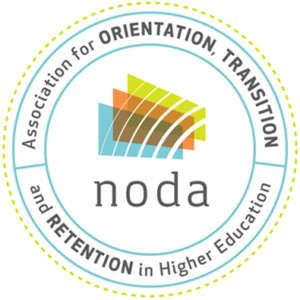
What will welcome week and orientation look like this fall, and what are institutions around the country doing to shift and adjust to meet the needs of students? Below is a summary of the conversation hosted by NODA where several participants gave their input and answered questions.
Eena, Assistant Director at NYU, oversees welcome week and explains that they are in the process of contingency planning. They are proposing staggering welcome week events and programs over the entire month of August versus one week, the benefit being that different departments can space their programs out. They want to try not to have orientation overlap with classes so that students can more easily transition. They usually have a ball at the end of welcome week and are thinking perhaps, to maintain social distancing, they can have different rooms each with a specific theme, i.e., “prom” or “graduation.” Eena created a plan should fall need to be virtual, or the entire year virtual, via a spreadsheet with welcome program pillars of seven guiding principles that are rooted in NODA competencies. The spreadsheet has three options with dates and she suggests looking at what you can and cannot shift regarding programs. When looking at new students transitioning from online to campus, there needs to be a part II welcome week for when they go onto campus. She emphasizes the need to do more virtual engagement in the summer in order to build community, possibly having student-led mini micro communities that address different topics for incoming students. She mentions that Google Classroom has a lot of creative options for student leader training but maybe for virtual communities as well.
Vincent, who oversees the welcome week programming at Baylor University, says they typically do orientation in the summer and then welcome week. This year they are figuring out what pieces of orientation they can fit into welcome week and spread it over two and a half weeks instead of one. They are also looking at having a virtual program for students instead of in person. Something else they are considering is figuring out how to leverage student leaders for the month of July. They usually have 300 student leaders who lead small groups and this will shift if programs move to all virtual.
Meridia Sanders from TX A&M University coordinates “Howdy Week” and explains that a challenge has been how to re-conceptualize programs where 25-50 people can attend. One thing they are taking into consideration is talking to the leaders of the student center and events teams regarding what the policies are around space and capacity. They are wondering about spreading activities out over a few weeks versus one week, and they are thinking about possibly doing prom during welcome week as well.
Diana Barret from the University of Dayton chimed in saying they are having virtual orientation sessions over the summer with a small browser resource fair. There, students can upload content in virtual rooms that they can click in and out of. They are looking at whether or not their August camp program, that usually leads to the fall welcome week, can happen or not. They are also looking at what it will look like if they push welcome week out to October or later.
Tara Mcwhorter from TCU mentions that they might push some programs to August. And, in considering social distancing, they are looking at creating different modules with taking excursions out and off of campus versus having everything on campus. They are wondering whether or not to continue hosting several camps before welcome week or try to incorporate them into the beginning of welcoming week.
Taylor Dahlby, Assistant Director of Orientation at UW-Eau Claire, says they are working with online orientation as pertains to June orientation. She is tasked with creating opportunities to help students connect to campus while not being on campus. They are trying to plan for different scenarios come fall.
1) Are you doing giveaways, and how?
One school said they are sending out t-shirts, another laptop stickers, and another school is sending acorn pins (their school symbol) out to first year students to incorporate them into the tradition.
Vincent mentioned that they are considering sending out a postcard and a booklet with facts that students can simultaneously color during an Instagram Live session. They are also mailing out jerseys and possibly water bottles, and they are considering having some students return to campus early to help assemble packages.
2) Are you involving family programming during welcome week or are you asking families to stay home?
One participant, Meridia, said they are doing virtual new student conferences, but if they come back to campus they might have move-in early in the week so families can come in and host a family send-off dinner afterwards. They issued some refunds for new student conference fees so they would like to do something for them. This summer they are hosting topic-based webinars for families in order to keep them involved.
Corleyk, another participant, said they are inviting families to a one-day orientation at the end of July. If they have to go virtual the plan is to hold these sessions online.
Another participant, Delisa, said they are waiting to see what will happen regarding campus. They are working on online orientations and hoping that come August they will be able to have face-to-face time with students and parents. They also discussed staggering move-in over several days to a week, having the first group move in in the morning and do something special with the parents afterwards. They have information sessions geared towards families to keep them engaged until students can move to campus.
3) Is there is any thought on what will happen with sponsors that work with you on welcome week and how will you include them in the virtual experience?
Eena said they will be pursuing this once they have clarity with contingency planning. They usually do a lot with sponsors and want to involve and support local businesses.
The discussion yielded a lot of great ideas and suggestions and poses some of the challenges institutions across the country are facing in light of COVID-19. It also speaks to the enormous amount of adaptability and creativity that exists. There will be more upcoming webinars that will highlight more topics so stay tuned!
Resources
Campus ESP an online platform for parent communication and engagement


